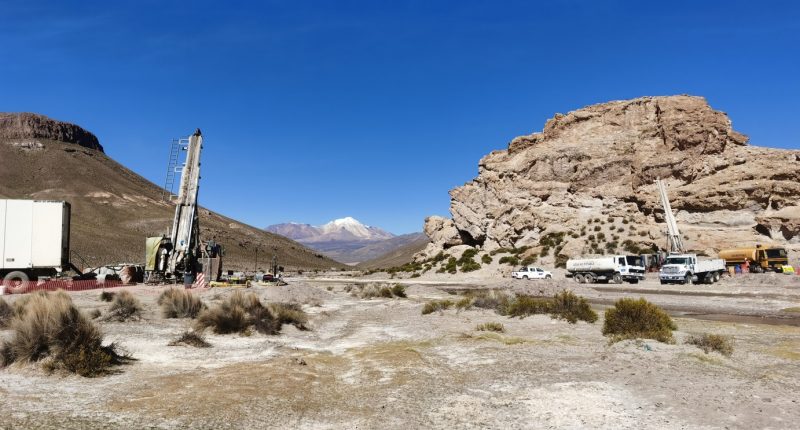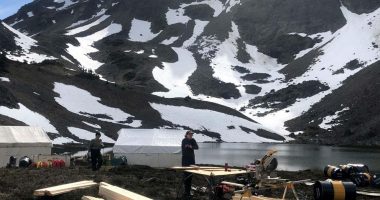By Jack Nowers
As the silver price hits 10-year highs of more than US$32/oz, investors are expecting that silver price appreciation will catch up to its cousin gold, which continues to go up at a rapid pace.
Inflation has been easing to the extent that the U.S. Federal Reserve began its long-anticipated cut to interest rates in September. This has precious metals set to climb even higher, as analyst talk turns to the possibility of additional cuts before year-end as the hard landing scenario for the economy looks more certain than not.
Interest rate cuts will weaken the U.S. dollar, which will increase the attractiveness of the precious metals as an economic hedge. Gold has hit an all-time high of more than US$2,650/oz, while silver is still about $20/oz below its historic high of $50/oz set in 2011. However, silver is beating gold this year, having risen 32% to the yellow metal’s 30%, with analysts thinking silver is only just starting its move higher.
Increasing silver demand from energy transition technologies such as photovoltaics mean the 850Moz of silver mined annually cannot keep pace with the more than 1Bozof demand, which means the market has an almost 200Moz per year deficit. Bigger deficits could follow if breakthroughs in silver-rich solid-state batteries by companies such as Samsung can move towards commercialization.
Silver stocks are also starting to move, particularly those with catalysts such as New Pacific Metals Corp. (TSX:NUAG, NYSE American:NEWP).
The company has just issued a Preliminary Economic Assessment (PEA) for its Carangas silver project in Bolivia, the world’s fifth largest silver producer. Silver is so entwined in Bolivia’s history that it features a silver mine on its flag, the ~3Boz Cerro Rico mine in Potosí, which has been operating continuously since 1545.
New Pacific outlined production of 6.6Moz of payable silver per year over a 16-year mine life, with 8.5Moz per year in the first six years. In total, Carangas will produce 106 Moz of payable silver, 620Mlb of payable zinc and 382Mlb of payable lead.
The project has attractive economics with an after-tax net present value (NPV) of $501 million at a 5% discount rate, with an internal rate of return (IRR) of 26% and 3.2-year payback using base case metal prices of $24/oz silver, $1.25/lb zinc and $0.95/lb lead. NPV and IRR increase to $748 million and 34% at a $30/oz silver price.
Carangas will cost $324 million to build and produce silver at an all-in sustaining cost (AISC) of $7.60/oz net of by-products. It will exploit the shallow, silver-rich part of the larger polymetallic deposit with open-pit mining.
Mining will be done via contract mining, which means the company will not have to invest capital in a mining fleet. Mineralized material will be fed into a 4M tonnes per year flotation plant to produce silver-lead concentrate containing over 3,500 g/t of silver, and a zinc concentrate.
Throughout the development process, the company will be able to call on the advice and support of key shareholders, Silvercorp and Pan American Silver, two significant silver producers.
Carangas is a large deposit – over 200 Mt, developing the whole deposit at once would be very capital intensive. In order to avoid this New Pacific found a better way – by focusing the PEA mine plan on the most economic material in the deposit. This means that the Carangas project will mine a relatively high-grade, near surface subset of the deposit – 64Mt grading 63 g/t silver, 0.8% Zn and 0.4% Pb – while preserving the rest of the deposit for future development. This means the New Pacific will be able to benefit from the inherent advantages of Carangas (proximity to existing infrastructure, low strip ratio, etc.) without having a large upfront capital cost – this is the source of the high project returns.
New Pacific is now engaging with government authorities and local communities to advance project permitting. Once it has confidence that it has a pathway to a favorable and timely permitting outcome, it will proceed with a feasibility study, which will take 12-18 months to complete. Other permitting-related tasks include entering into a comprehensive mine development agreement with the local community, converting its exploration license into a mining license, and progressing an Environmental Impact Assessment Study (EIA). New Pacific anticipates being able to complete these steps by the second half of 2025.
With the project set to create 500 jobs, New Pacific is receiving governmental support in both Oruro and at the federal level. The recently formed Oruro Mining Task Force has paved the way for transitioning from an exploration license to a mining license, with Carangas set to become the first project to do so under Bolivia’s 2014 mining code. The Company believes that continued collaboration and support from governmental authorities are crucial for the Project’s success and its potential to become a key source of raw material for a zinc plant under construction by the Bolivian government in Oruro.
Silver Sand
While the potential at Carangas is significant, what we haven’t said until now is that it is New Pacific’s second project. The PEA shows that Carangas is more than a benchwarmer. However, Silver Sand, the company’s main project in Potosi, is more advanced with a prefeasibility study (PFS) completed in June 2024.
Silver Sand hosts 175Moz in silver reserves, making it one of the largest undeveloped silver deposits in the world. It posted an after-tax NPV of $740 million and an IRR of 37% at a base case price of $24/oz silver and a 1.9-yer payback, rising to more than $1.1 billion and 48% at $30/oz silver.
It will have a 13-year mine life with annual production of more than 12 Moz at an AISC of $10.69/oz following an initial capital cost of $358 million.
Together, New Pacific’s Carangas and Silver Sand projects represent a net present value of $1.2 billion in their base case scenarios and more than $1.8 billion at current silver prices, yet its market capitalization is just $252 million. That is an incredible valuable opportunity!
What’s more, the company has a strong treasury of $22 million at the end of the June quarter, to continue working and derisking the projects without needing to return to the market to raise more funds. With key catalysts in its future, including clarity on permitting processes, investors should not overlook this opportunity.
To learn more about New Pacific Metals Corp. (TSX:NUAG, NYSE American:NEWP), please visit newpacificmetals.com/welcome.
This is third-party content provided by New Pacific Metals Corp. (TSX:NUAG, NYSE American:NEWP). Please see full disclaimer here.
Join the discussion: Find out what everybody’s saying about this company on the New Pacific Metals Corp. Bullboard investor discussion forum, and check out the rest of Stockhouse’s stock forums and message boards.
(Top photo of drilling at New Pacific Metals’ Carangas project in Bolivia: New Pacific Metals Corp.)






